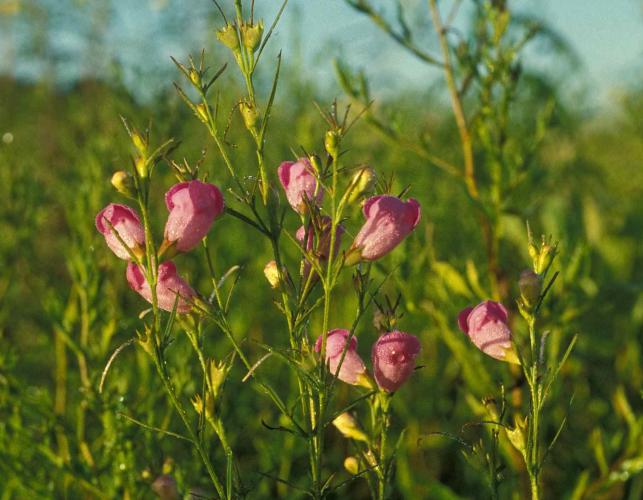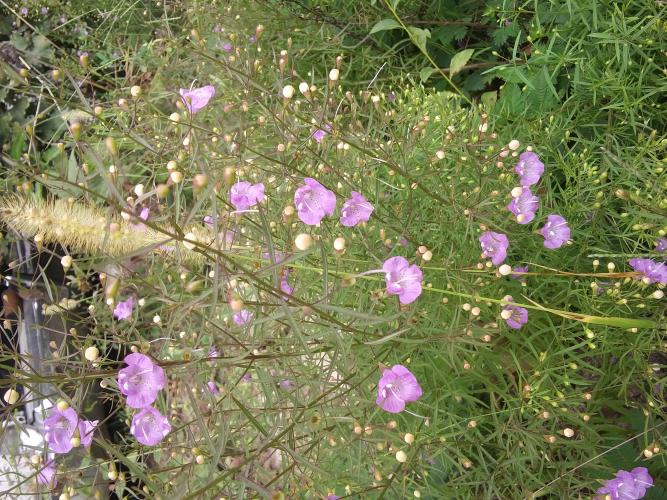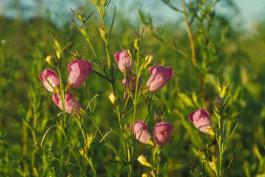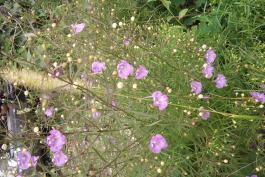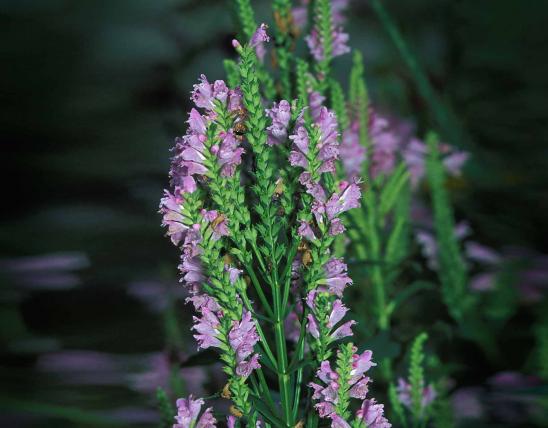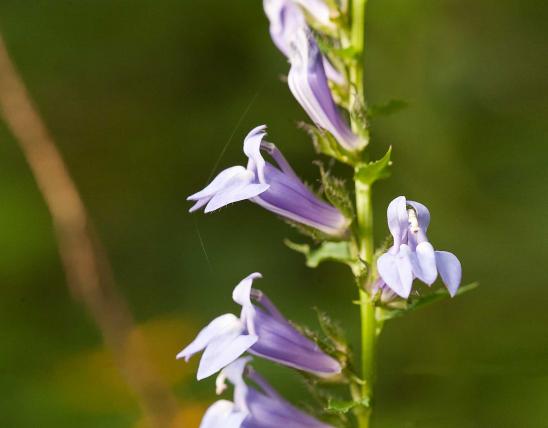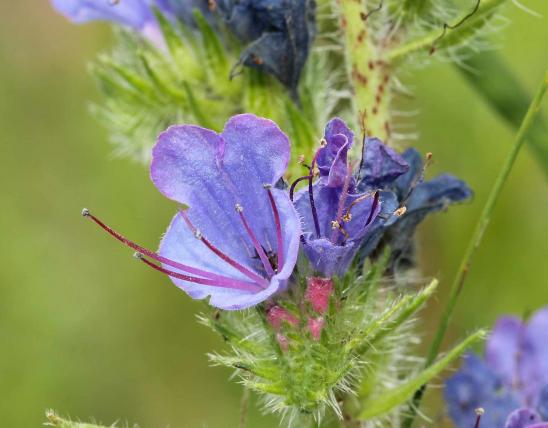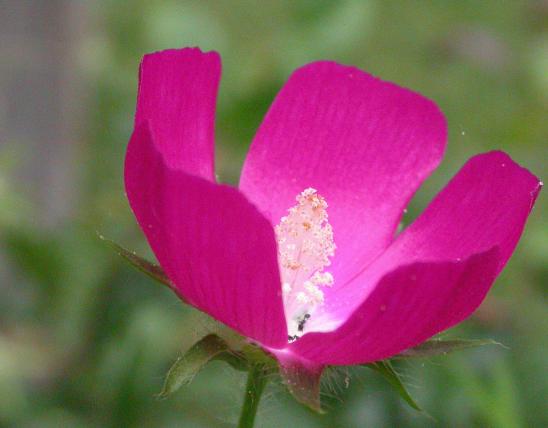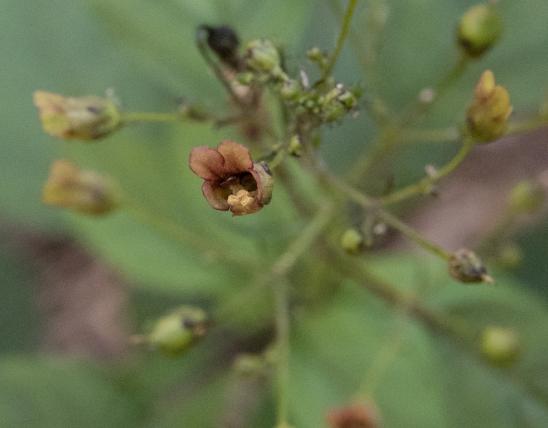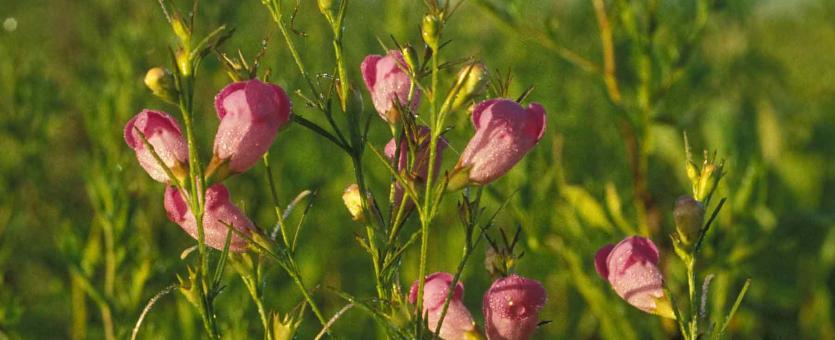
A much-branched, bushy annual, with wiry branches, the main stem with narrow ridges. Flowers single on pedicels arising from leaf axils, light magenta to rose purple (sometimes white), funnel-shaped with a short tube, 5 distinct lobes having finely fringed margins, and darker purple spots in the throat. The upper lip arches over the 4 hairy stamens. Blooms August–October. Leaves opposite, linear, to 3 inches long and ⅛ inch wide; upper leaves have smaller leaflets growing from axils. Fruit rounded capsules containing many seeds.
Similar species: Eight other species of Agalinis occur in Missouri. Of these, rough-stemmed gerardia (A. gattingeri) is fairly widespread in all but the northwest and extreme southeast parts of Missouri. It grows in acidic soils in dry, open woods and glade borders. Its foliage is yellowish green, its leaves only about 1 inch long and the flowers pink.
Height: to 2 feet.
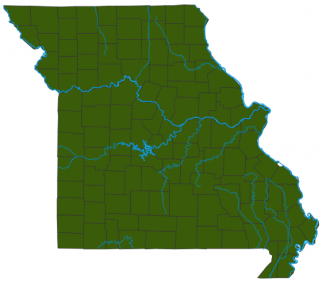
Scattered statewide.
Habitat and Conservation
Occurs in dry or moist, open woods, ledges of bluffs, prairies, wet depressions, swampy meadows, borders of streams, ponds, and ditches, open ground, and wet thickets.
Status
This plant used to be a member of the figwort family (Scrophulariaceae), but recent DNA studies have shown that the former members of that large family should be split into several separate families. Most members of the newly reorganized broomrape family (Orobanchaceae) used to be considered "scrophs," and this plant is one example. Older guidebooks and references reflect the previous taxonomy.
Human Connections
This showy native wildflower is an annual that will reseed itself in the home garden.
Ecosystem Connections
Like many other members of the broomrape family, this species apparently derives some of its nutrients by connecting its roots to those of nearby plants and parasitizing them. Bees pollinate the flowers, and the buckeye butterfly uses this as a larval host plant.
